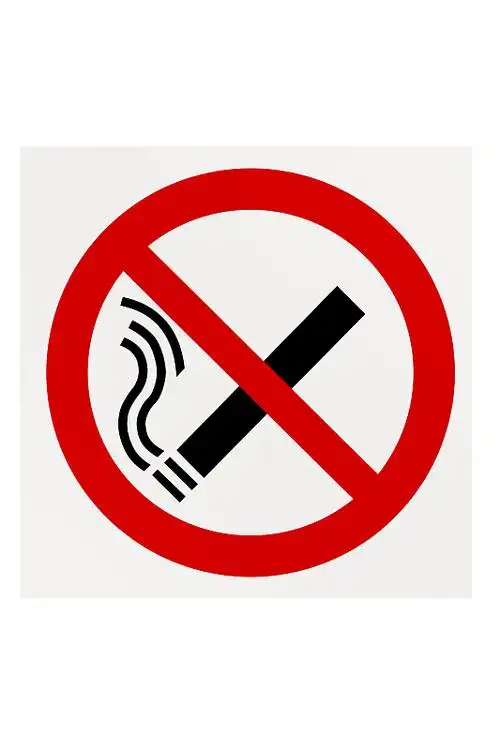How Tobacco Smoke Accelerates the Decline of Female Reproductive Aging
The journey of female reproduction is intrinsically linked to the passage of time, governed by the gradual depletion of a finite ovarian reserve. This process, known as reproductive aging, is typically measured by biomarkers such as Anti-Müllerian Hormone (AMH) levels and Antral Follicle Count (AFC). While chronological age is the primary determinant, a growing body of evidence reveals that environmental and lifestyle factors can significantly modulate its pace. Among these, tobacco smoking stands out as a potent and pervasive accelerant, actively hastening the decline of these critical biomarkers and effectively stealing fertile years from women.
Understanding the Key Biomarkers of Ovarian Aging
Before delving into the impact of tobacco, it is crucial to understand the biomarkers used to assess ovarian health and reserve.
- Anti-Müllerian Hormone (AMH): Produced directly by the small, growing follicles in the ovaries, AMH levels in the blood are considered one of the most reliable indicators of ovarian reserve. High AMH suggests a robust reserve, while declining levels indicate a diminishing pool of remaining oocytes. It is relatively stable throughout the menstrual cycle, making it a convenient clinical marker.
- Antral Follicle Count (AFC): This is a transvaginal ultrasound measurement of the small (2-10mm) follicles present in the ovaries at the beginning of a menstrual cycle. Each antral follicle represents a potential egg that can be recruited for that cycle. A low AFC is a direct visual confirmation of a reduced ovarian reserve.
- Follicle-Stimulating Hormone (FSH): Measured on day 3 of the menstrual cycle, FSH is a pituitary hormone that stimulates follicle growth. As the ovarian reserve dwindles and egg quality decreases, the ovaries must be stimulated more intensely to produce a mature egg. Consequently, FSH levels rise, making it another key, though more variable, biomarker of aging ovaries.
These biomarkers collectively paint a picture of a woman's reproductive timeline, a timeline that tobacco smoke aggressively fast-forwards.

The Chemical Assault: How Tobacco Damages the Ovaries
Tobacco smoke is a complex cocktail of over 7,000 chemicals, including established reproductive toxicants like nicotine, cyanide, carbon monoxide, and polycyclic aromatic hydrocarbons. These compounds orchestrate a multi-faceted attack on ovarian function through several key mechanisms:
- Accelerated Follicular Depletion (Atresia): The ovary is endowed with a non-renewable number of primordial follicles at birth. Toxicants in tobacco smoke, particularly polycyclic aromatic hydrocarbons, have been shown to trigger apoptosis (programmed cell death) in these primordial follicles. This leads to an irreversible and accelerated loss of the ovarian reserve, depleting the pool of available eggs much faster than in non-smokers.
- Impaired Blood Flow and Oxidative Stress: Nicotine is a potent vasoconstrictor, reducing blood flow to the ovaries. This deprives the follicles of essential oxygen and nutrients. Furthermore, the chemicals in smoke generate a state of significant oxidative stress, producing an excess of harmful free radicals that damage cellular structures, including DNA within the oocytes themselves. This compromises not only the quantity but also the quality and genetic integrity of the eggs.
- Hormonal Disruption and Altered Estrogen Metabolism: Smoking alters the way the liver metabolizes estrogen, leading to increased production of less potent or even anti-estrogenic metabolites. This disrupts the delicate feedback loop between the ovaries, pituitary gland, and hypothalamus, potentially leading to dysfunctional follicle development and anovulatory cycles. It also contributes to earlier menopause, a definitive endpoint of reproductive aging.
- Direct Toxicity to Granulosa Cells: The granulosa cells within the follicle are responsible for producing AMH. Studies have demonstrated that smoke toxins directly impair the function and viability of these cells. This direct cytotoxicity is a primary reason why smokers exhibit significantly lower AMH levels for their age compared to their non-smoking counterparts.
Compelling Evidence: Studies Linking Smoking to Accelerated Aging
The theoretical mechanisms are robustly supported by clinical and epidemiological data. Numerous cross-sectional and cohort studies have consistently demonstrated that women who smoke have:
- Lower AMH Levels: A seminal study published in the Journal of Clinical Endocrinology & Metabolism found that current smokers had AMH levels that were, on average, 44% lower than non-smokers after adjusting for age and other confounders. Their AMH profile resembled that of non-smokers who were significantly older.
- Reduced Antral Follicle Count (AFC): Ultrasound studies routinely show that smokers have a lower total AFC than non-smokers of the same age, indicating a smaller pool of recruitable follicles.
- Earlier Menopause: Large meta-analyses have conclusively shown that smokers reach menopause 1 to 4 years earlier than non-smokers. This is the ultimate clinical confirmation of an accelerated reproductive timeline.
- Poorer IVF Outcomes: In assisted reproduction, smokers require higher doses of gonadotropins for ovarian stimulation, yield fewer retrieved oocytes, and have lower fertilization and implantation rates. Their response to treatment is characteristic of a "older" ovary, even if they are chronologically young.
The dose-response relationship is also evident: heavier smokers tend to have more severely impacted biomarkers than light smokers, though no level of exposure appears to be safe for ovarian health.
The Illusion of Recovery and The Impact of Secondhand Smoke
A critical question is whether the damage is reversible. While quitting smoking halts further accelerated decline and provides immense overall health benefits, the loss of primordial follicles is permanent. The clock cannot be turned back on the follicles that have been destroyed. Therefore, the best strategy is prevention and early cessation to preserve the remaining reserve.
Furthermore, the threat is not confined to active smokers. Emerging evidence suggests that exposure to secondhand smoke may also be associated with lower AMH levels and earlier menopause, indicating that environmental tobacco smoke is a significant risk factor for accelerated reproductive aging.
Conclusion: A Call for Awareness and Action
The message is unequivocal: tobacco smoke is a powerful toxicant that aggressively accelerates the biomarkers of female reproductive aging. It depletes AMH, reduces AFC, disrupts hormonal balance, and ultimately culminates in an earlier arrival of menopause. For any woman of reproductive age, smoking represents a conscious decision to trade fertile potential for a habit that actively diminishes it. Healthcare providers have a vital role in communicating this specific risk clearly and forcefully. Integrating questions about smoking status into reproductive counseling and fertility workups is essential. By recognizing tobacco not just as a general health hazard but as a direct threat to their reproductive lifespan, women can be empowered to make informed choices that protect their fertility and preserve their biological time.










